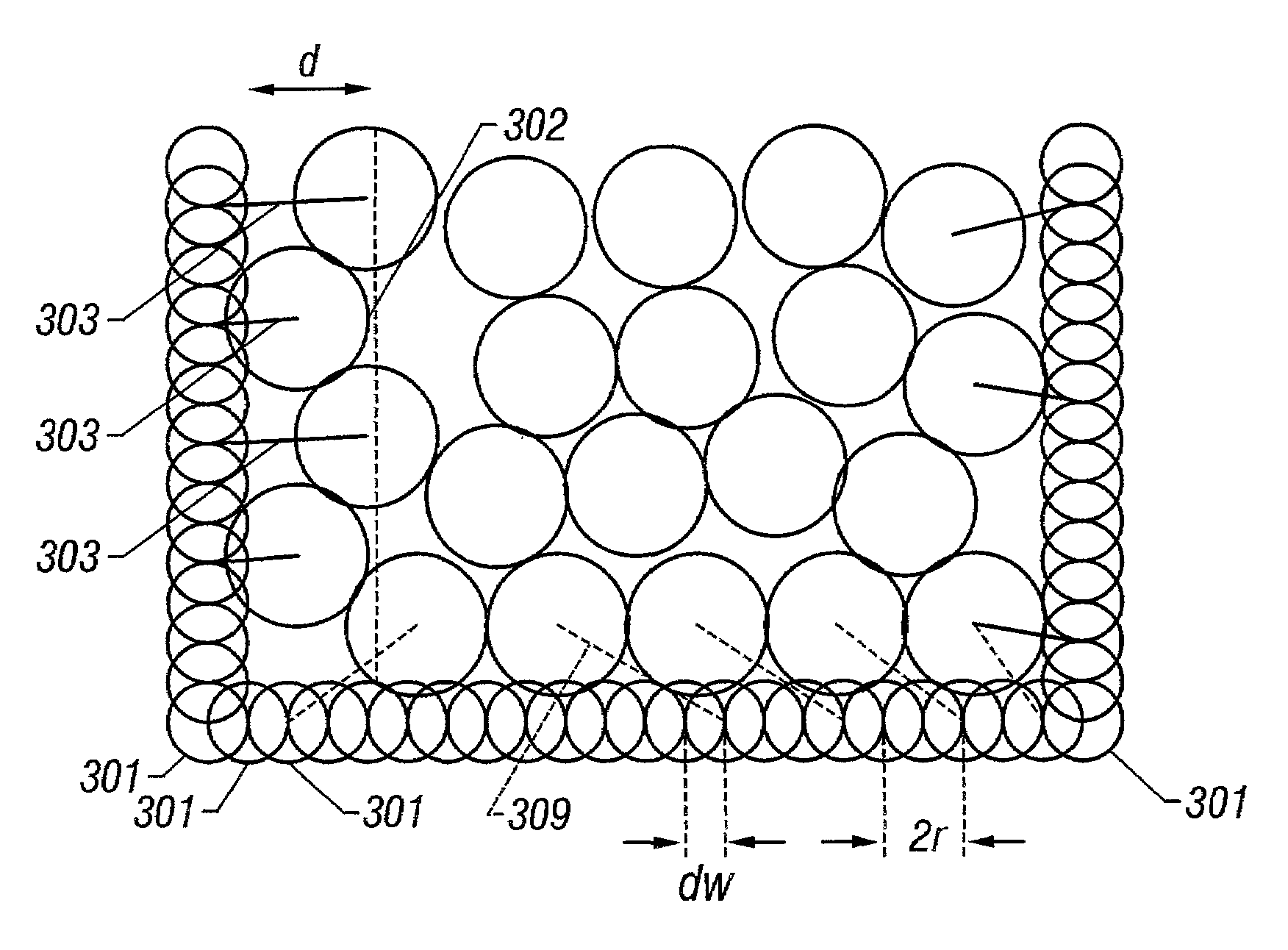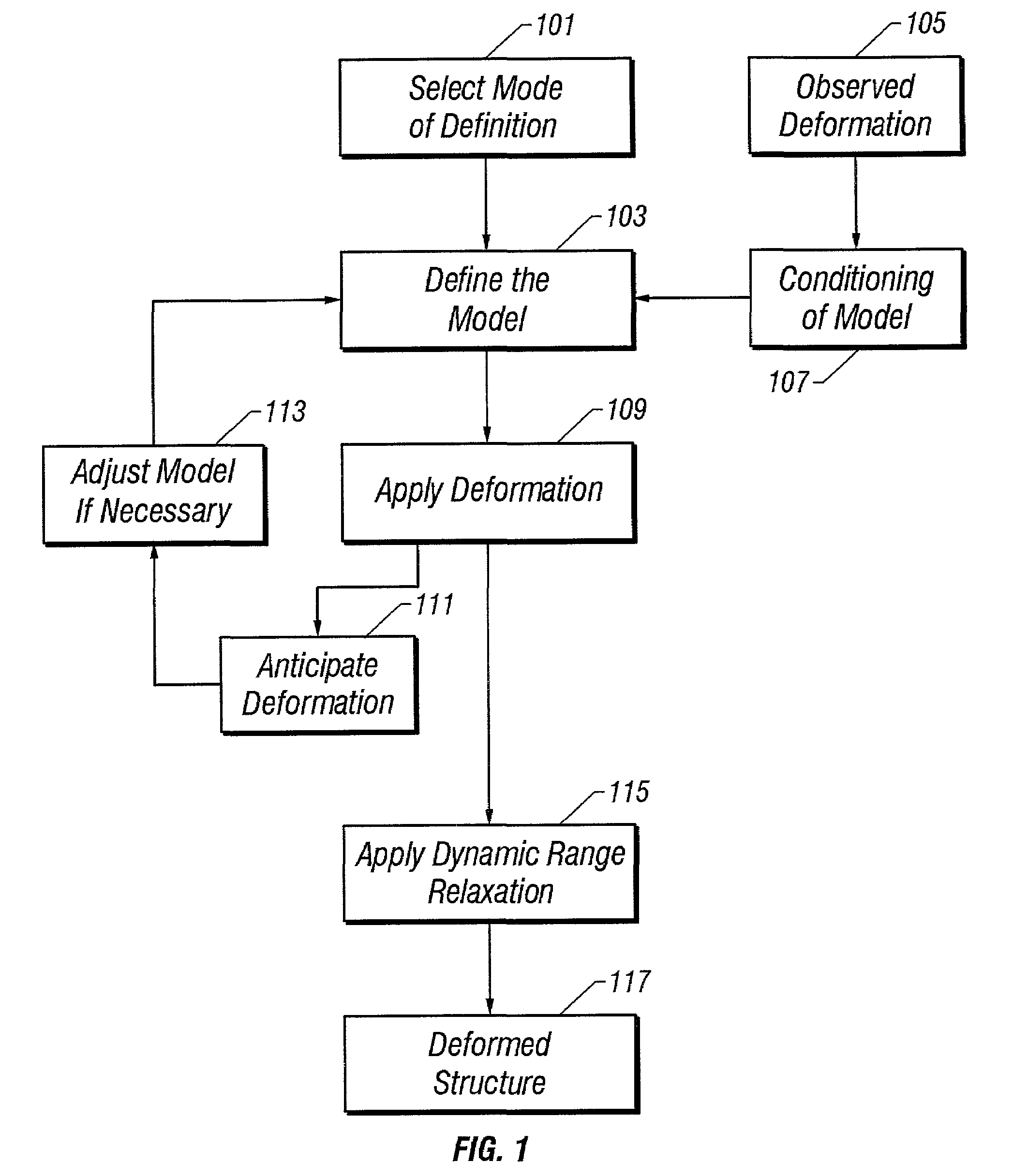Method of modeling of faulting and fracturing in the earth
a faulting and fracture technology, applied in seismology for water-logging instruments, using reradiation, etc., can solve problems such as and achieve the effect of speeding up computation time and making the conditioning step easier
- Summary
- Abstract
- Description
- Claims
- Application Information
AI Technical Summary
Benefits of technology
Problems solved by technology
Method used
Image
Examples
Embodiment Construction
An Overview of the Invention
[0039]Turning now to FIG. 1, a flow chart of the major steps of the present invention is depicted. The first step in the invention is to select a mode of definition of the subsurface 101. This is described further below in reference to FIGS. 2a–2b. This step defines the boundaries of the model and the nodal configuration therein. The mode of definition may be aerial, cross-sectional or 3-D. Within the model, a plurality of interconnected nodes that characterize the geometry of the model are defined. In a preferred embodiment of the invention, the nodal pattern is a regular triangular lattice, although other patterns, such as a random lattice, may also be used. The user may also specify the number of nodes in and the aspect ratio of the model. This is conveniently done using the GUI. The GUI is discussed below in reference to FIGS. 6–13.
[0040]Within the framework of the nodal geometry defined at 101, the material properties of model are input 103. The node...
PUM
 Login to View More
Login to View More Abstract
Description
Claims
Application Information
 Login to View More
Login to View More - R&D
- Intellectual Property
- Life Sciences
- Materials
- Tech Scout
- Unparalleled Data Quality
- Higher Quality Content
- 60% Fewer Hallucinations
Browse by: Latest US Patents, China's latest patents, Technical Efficacy Thesaurus, Application Domain, Technology Topic, Popular Technical Reports.
© 2025 PatSnap. All rights reserved.Legal|Privacy policy|Modern Slavery Act Transparency Statement|Sitemap|About US| Contact US: help@patsnap.com



